Ever felt stuck between thinking like an artist or a scientist? You’re not alone. Many of us wonder where our strengths lie and how to best use them. Here’s a fact: artistic and scientific creativity might seem worlds apart, but they share more common ground than you’d think.
This blog will show you the cool ways these two types of creativity work. You’ll see how your brain plays a role in your creative process, whether you’re painting a masterpiece or solving complex equations.
Ready to see creativity in a new light? Keep reading!
Key Takeaways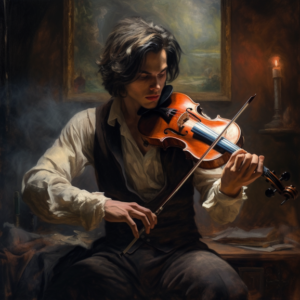
- Both artistic and scientific creativity rely on novel thinking, problem-solving skills, and turning abstract ideas into tangible outputs. This shows how artistic inspiration and scientific innovation share a common process despite typically focusing on different outcomes like emotion in art versus practical solutions in science.
- The brain plays a significant role in creative processes, with the default mode network fueling imaginative thinking and cognitive control guiding innovative problem solving. These neurobiological mechanisms support both the emotional expressions found in art and the logical reasoning required for scientific advancements.
- Stereotypes about artists being impractical or scientists lacking imagination can limit individual potential and societal progress. Overcoming these misconceptions is crucial as both forms of creativity contribute to innovation by offering new perspectives or solving complex problems that drive societal progress forward.
- Artistic creativity often uses the right hemisphere of the brain more, relying on imagination and emotional processing, while scientific creativity relies on logical reasoning powered by the left hemisphere. Despite these differences, nurturing both types of creativity is essential for comprehensive development and achieving breakthroughs across diverse fields.
- Embracing both artistic and scientific forms of creativity enriches society by fostering personal fulfillment through expression or discovery while driving aesthetic value alongside technological or medical advancements. By valuing diverse creative processes, we can address real-world challenges with innovative solutions that benefit all aspects of life.
Exploring the Concept of Creativity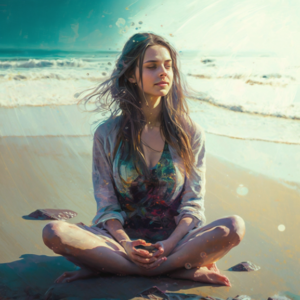
Creativity comes in various forms, with artistic and scientific creativity serving as two distinct yet interconnected areas. Understanding the unique powers of these creative processes can shed light on their influential roles in our lives.
By exploring the cognitive processes and neurobiological foundations, we can gain a deeper appreciation for the multifaceted nature of creativity.
Definitions of Artistic and Scientific Creativity
Artistic creativity unleashes the power of imagination to create works that stir emotions and convey beauty. This form bridges personal feelings with external expressions, turning a blank canvas or silent notes into art full of life and meaning.
It relies heavily on aesthetic value, artistic expression, and personal fulfillment. Visual artists and musicians tap into their inner worlds to produce pieces that resonate on an emotional level.
On the flip side, scientific creativity focuses on solving problems through logical reasoning and experimental processes. Scientists use rational thinking to explore unknown territories in STEM fields.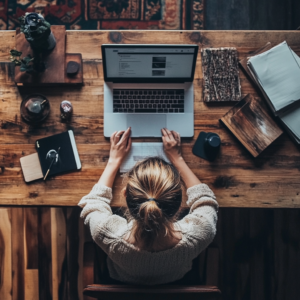
Their discoveries often lead to scientific innovation that can change how we live our lives. Through rigorous testing and analysis, they turn abstract ideas into concrete solutions that advance technology and improve health care systems.
Commonalities and Differences
Creativity bridges gaps, turning new ideas into realities. Let’s talk about how artistic and scientific creativity compare and overlap. Imagine them as two sides of the same coin.
Artistic Creativity | Scientific Creativity | |
Definition | Expresses personal vision, emotions, or worldviews through various media. | Seeks to understand the universe, creating new theories, experiments, and technologies. |
Common Ground | Both rely on novel thinking and problem-solving skills. They transform abstract ideas into tangible outputs. | |
Differences | Driven by subjective interpretation and aesthetic value. | Guided by empirical evidence and logical reasoning. |
Cognitive Process | Utilizes divergent thinking, exploring multiple solutions. | Employs both divergent and convergent thinking, hypothesizing and then narrowing down to the best solution. |
Impact | Inspires emotion and cultural dialogue. | Advances understanding, technology, and practical solutions to problems. |
Both types of creativity make the world a richer place. They push boundaries in different arenas. Art evokes feelings and thoughts. Science drives innovation and development. Yet, both spring from the deep well of human curiosity and ingenuity.
Cognitive Processes in Creativity
Understanding creativity involves exploring the processes that drive it. Cognitive regulation and adaptability play crucial roles, shaping how we think and innovate. The default network in our brains fuels creative thinking, allowing us to tap into imaginative areas while handling complex challenges.
Cognitive Control and Flexibility
Cognitive control and flexibility are like the steering wheel of a car, guiding our creative thoughts. They allow us to switch gears between different ideas, making it possible to think outside the box.
Artists use these skills when painting a masterpiece that expresses deep emotion or when finding new ways to captivate their audience. Scientists rely on them too, especially when solving complex problems with innovation at the forefront.
The ability to adapt and change one’s approach is not just about survival; it’s about thriving in a world that constantly evolves, says Dr. Emily Jacobs, an expert in cognitive neuroscience. This skill set powers through challenges, fueling both artistic inspiration and scientific discovery.
Role of the Default Network in Creative Thinking
Transitioning from cognitive control and flexibility to the role of the default network in creative thinking, it’s crucial to recognize that this network is vital in facilitating innovative ideas.
The default mode network, consisting of various brain regions like the medial prefrontal cortex, posterior cingulate cortex, and inferior parietal lobule, acts as a hub for divergent thinking and imaginative musings.
It fosters creativity by enabling individuals to freely associate ideas, visualize scenarios, and generate novel solutions. As researchers delve deeper into understanding this neurobiological phenomenon, they have uncovered its profound impact on artistic inspiration and scientific discovery.
This intricate interplay within our brains not just fuels creative intelligence but also supports our capacity for rational thinking balanced with imaginative exploration.
Understanding the role of the default mode network reveals how it supports both aesthetic creativity in art and logical reasoning in science. By embracing its significance in nurturing inventive thought processes across various areas—from revealing the secrets of artistic expression to fostering groundbreaking scientific innovation—we gain insight into how our brain functionality influences creative intelligence across diverse contexts.
Neurobiological Underpinnings
The brain structures associated with artistic and scientific creativity differ significantly, influencing how individuals engage in creative tasks. Understanding the influence of neurobiology on creative output provides valuable insights into the cognitive processes underlying artistic expression and scientific innovation.
Brain Structures Linked to Artistic vs. Scientific Creativity
Exploring the brain, we learn that artistic and scientific creativity illuminate different areas like vibrant displays. Here’s the comparison:
Artistic Creativity | Scientific Creativity |
Utilizes the right hemisphere more. | Depends on the left hemisphere. |
Depends on the Default Mode Network (DMN) for daydreaming and imagination. | Utilizes the Executive Control Network (ECN) for logical reasoning and problem-solving. |
Connects with areas involved in emotional processing, like the amygdala. | Engages regions associated with analytical thinking, such as the prefrontal cortex. |
Relies on the cerebellum for creative intuition and spontaneous ideas. | Uses the basal ganglia for structured thought processes and routine operations. |
Interestingly enough, whether you’re creating a masterpiece or solving a scientific conundrum, your brain’s connections play a pivotal role. Artistic individuals might be inspired by the clouds, thanks to the DMN, while logical thinkers remain practical through the ECN. Yet, both forms of creativity are not distinct worlds; they exemplify different aspects of the same phenomenon.
Influence of Neurobiology on Creative Output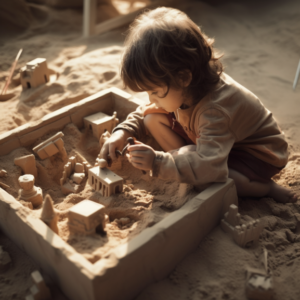
The influence of neurobiology on creative output is significant in understanding the generation of artistic and scientific ideas. Brain structures play a crucial role, with the prefrontal cortex being linked to logical reasoning in scientific innovation, while the default network contributes to imagination and artistic expression.
Cognitive neuroscience reveals that creative intelligence involves both rational thinking and aesthetic creativity. These processes are essential for personal fulfillment and fundamental in societal innovation through STEM fields.
Brain functionality differs in artistic inspiration and scientific discovery, reflecting the ever-evolving nature of creative thinking. Understanding these neurobiological foundations can boost our set of skills, revealing insights for unleashing innovative potential across diverse areas.
Societal Perceptions and Impacts
Societal perceptions and impacts shape how creativity is valued and utilized in various fields. Understanding these influences can shed light on the broader implications of artistic and scientific creativity in our communities.
Stereotypes and Their Influence on Creativity
Stereotypes have a significant impact on creativity, shaping societal perceptions and influencing individuals’ self-beliefs. Whether it’s the preconceived idea that artists are whimsical and impractical or that scientists lack imagination, these notions can limit people’s willingness to pursue creative endeavors in their respective fields.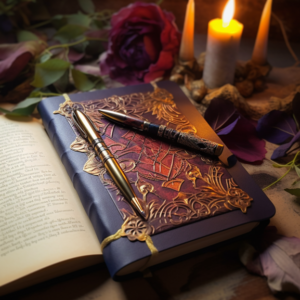
For example, the perception of the “mad genius” may deter some talented individuals from embracing their artistic potential due to fears of being misunderstood or rejected by society.
Similarly, the idea that scientific pursuits are purely logical and rigid may dissuade those with a natural aptitude for creativity from exploring careers in STEM fields. These stereotypes affect personal fulfillment and hinder diversity in creative professions.
Moreover, these stereotypes can influence how creativity is valued within different domains. Artistic expression might be perceived as more subjective and aesthetically driven while scientific innovation is often valued for its practical applications and problem-solving capabilities.
This dichotomy perpetuates misconceptions about the nature of creativity itself and overlooks the interconnectedness of artistic inspiration and rational thinking in scientific discovery.
Creativity’s Role in Innovation and Problem Solving
Stereotypes about creativity can influence how we perceive its role in innovation and problem solving. On one hand, artistic creativity is often associated with free expression and imagination, while scientific creativity is linked to rational thinking and logical reasoning.
However, both types of creativity play crucial roles in driving innovation and solving complex problems across various fields including STEM. Artistic inspiration can lead to new perspectives, while scientific discovery fuels advancements in technology and medicine.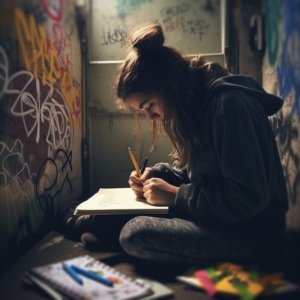
Creative intelligence allows us to think innovatively, pushing boundaries for novel solutions that transform the world.
Innovation thrives on a combination of aesthetic creativity and scientific ingenuity. The fusion of these creative processes produces pioneering ideas that propel societal progress forward.
By leveraging diverse forms of creative thinking, individuals can bring about meaningful change by addressing real-world challenges faced by our ever-evolving society.
Conclusion
In conclusion, comprehending the unique strengths of artistic and scientific creativity provides valuable insights into their distinct cognitive processes and neurobiological foundations.
These insights can foster societal appreciation for both forms of creativity, acknowledging their roles in innovation and problem-solving within STEM fields. By embracing the diverse cognitive functions involved in artistic expression and scientific innovation, we can unveil the secrets of creative intelligence to promote personal fulfillment and drive aesthetic value.
Keep in mind, exploring these different aspects not just enriches our set of skills but also motivates us to delve into continuously developing realms of creative thinking – ultimately improving our ability to navigate the intricacies of the world around us.
